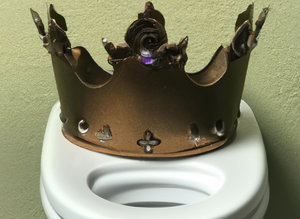Basketball is a game of strategy, skill, and sometimes, a battle of wits. One of the most challenging obstacles a basketball team can face is breaking down a well-executed zone defense. This article is designed to be your playbook for dismantling zone defenses on the court.
The Anatomy of a Zone Defense
Zone defense is a collective effort where each defender is responsible for guarding an area of the court rather than an individual opponent. Most zone defenses aim to clog the paint, force difficult passes, and challenge every shot. To beat a zone, understanding its structure is the first step.
Many teams employ a zone defense to protect the basket and force the offensive team to shoot from outside. The common zone formations include the 2-3, 3-2, and 1-3-1 defenses. Each has its strengths and weaknesses, which a savvy offense can exploit.
Crafting a Zone Offense Strategy
The key to beating a zone is to have a well-thought-out zone offense strategy. Good spacing, quick ball reversals, and smart passing are the foundations of a successful zone offense. Offensive players must be patient yet assertive, always looking for gaps within the zone to exploit.
A zone offense should be designed to stretch the defense, create open shots, and find ways to get the ball inside. This often involves setting screens, using pass fakes, and maintaining good ball movement to shift the zone and open passing lanes.
Ball Movement and Player Positioning
Good ball movement is essential against most zone defenses. It forces defenders to move and adjust, which can lead to mistakes and open opportunities. Quick ball reversal from one side of the floor to the other can catch defenders out of position, creating chances for a wide open shot.
Positioning offensive players in the high post and short corner can be particularly effective. These areas are often the weak spots in a zone. When the ball handler gets the ball to these positions, it forces two defenders to commit to one player, leaving others open.
Dribble Penetration Against the Zone
When a ball handler drives into the gaps, it collapses the defense and can lead to kick-out opportunities for shooters or dump-offs for easy baskets.
However, dribble penetration must be done with purpose. Aimless or overzealous driving can lead to turnovers. Young players, in particular, should be coached on when and how to attack the seams of the zone effectively.
Utilizing the High Post and Short Corner
The high post and short corner are critical areas when facing a zone defense. Positioning a skilled player at the free throw line can facilitate ball movement, create open shots, and serve as a pivot point for the offense.
Similarly, placing a player in the short corner can stretch the baseline defender and open up the weak side of the floor. This can lead to easy baskets or force the zone to shift, creating opportunities for offensive rebounds or a lob pass to the opposite wing.
The Importance of Offensive Rebounding
Offensive rebounding can be a zone defense's Achilles' heel. Since zone defenders are responsible for areas rather than specific players, boxing out can be more challenging, giving the offense an edge on the boards.
Securing offensive rebounds provides additional scoring opportunities and can demoralize a defense. It's crucial for players to crash the boards whenever a shot goes up.
Exploiting the Weaknesses of Zone Defenders
Every defense has its weaknesses, and zone defenses are no exception. Zone defenders can be vulnerable to skip passes, ball screens, and post ups. Recognizing these vulnerabilities and exploiting them is key to dismantling the zone.
For example, skip passes can quickly shift the ball from one side of the floor to the other, often leading to a good shot before the defense can recover. Ball screens can disrupt the structure of the zone, and post ups can force the defense to collapse, opening up shooters on the perimeter.
Capitalizing on Every Opportunity
Drawing fouls and getting to the free throw line is another effective way to beat a zone defense. Free throws not only provide a chance to score with the clock stopped but also can lead to foul trouble for key defenders.
Encouraging players to attack aggressively and seek contact can increase the number of free throw opportunities. This strategy can also disrupt the rhythm of the defense and force adjustments.
Set Plays to Break Down the Zone
Set plays are a coach's best friend when it comes to cracking a zone defense. These plays are designed to move the ball quickly, set screens for shooters, and create mismatches.
Having a repertoire of set plays for different zone formations can give a team the upper hand. These plays should aim to get the ball inside, take advantage of weak side opportunities, and generate high percentage shots.
Adjusting to the Defense's Adaptations
As the offensive team starts to find success against the zone, the defense will inevitably make adjustments. It's crucial for the offense to recognize these changes and adapt accordingly.
This might mean switching the side of the floor where the ball is entered, changing the primary ball handler, or altering the pace of the game. Flexibility and the ability to adjust on the fly are hallmarks of a team that can consistently beat zone defenses.
How to Beat a Zone Defense Basketball FAQs
Zone defenses in basketball can be a real headache, especially when you're trying to score. It feels like you're running into a wall. Don't let those zone defenses control the game and leave you feeling stuck. It's time to unlock your offense and beat those zones. Browse through our Frequently Asked Questions section and discover strategies to outsmart any zone defense. No more feeling trapped on the court, it's time to take control and score.
What is the most effective way to beat a zone defense?
The most effective way to beat a zone defense is through good ball movement, strategic player positioning, and exploiting the weak spots in the defense, such as the high post and short corner. Dribble penetration, offensive rebounding, and drawing fouls to get to the free throw line are also key strategies.
How can a team improve its zone offense during a game?
A team can improve its zone offense by analyzing the defense's pattern, adjusting player positioning, and using set plays designed to create mismatches and open shots. Quick ball reversals and maintaining good spacing are also crucial adjustments during the game.
Why is offensive rebounding important against a zone defense?
Offensive rebounding is important against a zone defense because zone defenders are assigned to guard areas, making it harder for them to box out individual offensive players. This can lead to more offensive rebound opportunities, which can result in additional scoring chances and put pressure on the defense.
Summary
Beating a zone defense in basketball requires a combination of strategic planning, precise execution, and the ability to adapt. By utilizing good ball movement, exploiting the high post and short corner, and emphasizing offensive rebounding and free throws, a team can effectively dismantle a zone defense. Remember, patience and persistence are your allies in this chess match on the hardwood.









